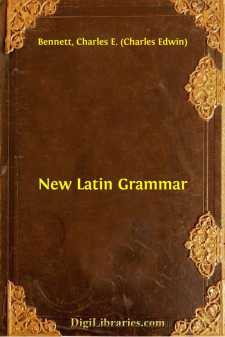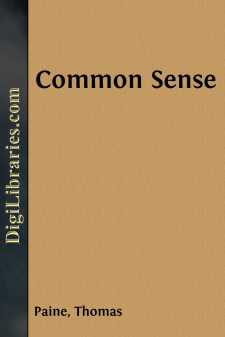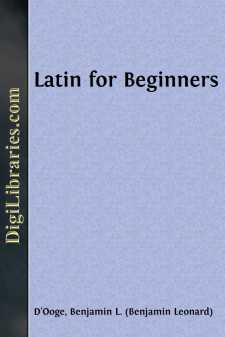Categories
- Antiques & Collectibles 13
- Architecture 36
- Art 48
- Bibles 22
- Biography & Autobiography 814
- Body, Mind & Spirit 145
- Business & Economics 28
- Children's Books 17
- Children's Fiction 14
- Computers 4
- Cooking 94
- Crafts & Hobbies 4
- Drama 346
- Education 56
- Family & Relationships 59
- Fiction 11833
- Foreign Language Study 3
- Games 19
- Gardening 17
- Health & Fitness 34
- History 1378
- House & Home 1
- Humor 147
- Juvenile Fiction 1873
- Juvenile Nonfiction 202
- Language Arts & Disciplines 89
- Law 16
- Literary Collections 686
- Literary Criticism 179
- Mathematics 13
- Medical 41
- Music 40
- Nature 179
- Non-Classifiable 1768
- Performing Arts 7
- Periodicals 1453
- Philosophy 66
- Photography 2
- Poetry 897
- Political Science 203
- Psychology 45
- Reference 154
- Religion 516
- Science 126
- Self-Help 85
- Social Science 82
- Sports & Recreation 34
- Study Aids 3
- Technology & Engineering 59
- Transportation 23
- Travel 463
- True Crime 29
Our website is made possible by displaying online advertisements to our visitors.
Please consider supporting us by disabling your ad blocker.
New Latin Grammar
Categories:
Description:
Excerpt
PART I.
SOUNDS, ACCENT, QUANTITY.
THE ALPHABET.
1. The Latin Alphabet is the same as the English, except that the Latin has no w.
1. K occurs only in Kalendae and a few other words; y and z were introduced from the Greek about 50 B.C., and occur only in foreign words—chiefly Greek.
2. With the Romans, who regularly employed only capitals, I served both as vowel and consonant; so also V. For us, however, it is more convenient to distinguish the vowel and consonant sounds, and to write i and u for the former, j and v for the latter. Yet some scholars prefer to employ i and u in the function of consonants as well as vowels.
CLASSIFICATION OF SOUNDS.
2. 1. The Vowels are a, e, i, o, u, y. The other letters are Consonants. The Diphthongs are ae, oe, ei, au, eu, ui.
2. Consonants are further subdivided into Mutes, Liquids, Nasals, and Spirants.
3. The Mutes are p, t, c, k, q; b, d, g; ph, th, ch. Of these,—
a) p, t, c, k, q are voiceless, i.e. sounded without voice or vibration of the vocal cords.
b) b, d, g are voiced, i.e. sounded with vibration of the vocal cords.
c) ph, th, ch are aspirates. These are confined almost exclusively to words derived from the Greek, and were equivalent to p + h, t + h, c + h, i.e. to the corresponding voiceless mutes with a following breath, as in Eng. loop-hole, hot-house, block-house.
4. The Mutes admit of classification also as
Labials,p,b,ph.Dentals (or Linguals),t,d,th.Gutturals (or Palatals),c,k,q,g,ch.5. The Liquids are l, r. These sounds were voiced.
6. The Nasals are m, n. These were voiced. Besides its ordinary sound, n, when followed by a guttural mute also had another sound,—that of ng in sing,—the so-called n adulterÐâЫnum; as,—
anceps, double, pronounced angceps.
7. The Spirants (sometimes called Fricatives) are f, s, h. These were voiceless.
8. The Semivowels are j and v. These were voiced.
9. Double Consonants are x and z. Of these, x was equivalent to cs, while the equivalence of z is uncertain. See , 3.
10. The following table will indicate the relations of the consonant sounds:—
VOICELESS.VOICED.SPIRATES.p,b,ph,(Labials).Mutes,t,d,th,(Dentals).c,k,q,g,ch,(Gutturals).Liquids,l,r,Nasals,m,n,f,(Labial).Spirants,s,(Dental).h,(Guttural).Semivowels,j,v.a. The Double Consonants, x and z, being compound sounds, do not admit of classification in the above table.
SOUNDS OF THE LETTERS.
3. The following pronunciation (often called Roman) is substantially that employed by the Romans at the height of their civilization; i.e., roughly, from 50 B.C. to 50 A.D.
1. Vowels.
ÐâÐÐas infather;ÐâÐâas in the first syllableahá;ÐâвÐÑas inthey;ÐâвÐÑas inmet;ÐâЫas inmachine;Ðâas inpin;Ðâ¦ÐÐas innote;Ðâ¦ÐÐas inobey,melody;Ðâ¦Ð«as inrude;Ðâ¦as input;ylike Frenchu, Germanü.2. Diphthongs.
aelikeaiinaisle;oelikeoiinoil;
eias inrein;
aulikeowinhow;euwith its two elements,ÐâвÐÑandÐâ¦, pronounced in rapid succession;
uioccurs almost exclusively incuiandhuic....






